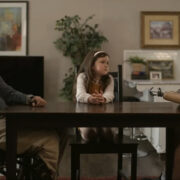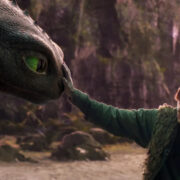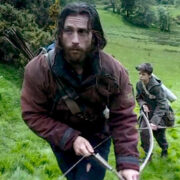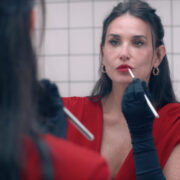A Century in Cinema: SAFETY LAST! (1923)

Jules Caldeira is an Associate Editor for Film Inquiry based…
Welcome to A Century in Cinema, the monthly column where I’ll be discussing films from a hundred years ago, the historical impact they had, and how they hold up today. Whether we’re covering timeless classics or obscure gems, follow along as we continue to explore…a century in cinema! WARNING: Hundred-Year-Old SPOILERS ahead!
In an age where action films and thrillers are packed with harrowing stunts, often driven by or completely dependent on special effects, it’s sometimes easy to forget how effective practical stunt work and a little camera trickery can be. Of course, there are still films being released today that emphasize the tradition of practical effects, but to see a film from a hundred years ago that can still make your palms sweat is especially impressive. Safety Last!, Harold Lloyd’s most famous picture, manages to do so while also delivering delightful comedy throughout.
A Man and His Mildred
The film opens with a surprisingly dark gag where our protagonist is seemingly being sent to the gallows, complete with a shot through iron bars and what appears to be a noose in the background, but it’s soon revealed that we’re actually at a train station and witnessing the scene through the ticket gate and the “noose” is actually a hoop used by train workers to make pickups as they roll by without stopping. In a tale nearly as old as film itself, Harold (which here is both the actor and the character’s name) is off to the big city to make something of himself, hopefully soon so he can send for his best gal Mildred (Mildred Davis, who was also Lloyd’s real-life partner) and they can be wed. He manages to rent a room with his pal “Limpy” Bill (Bill Strother), and though he works construction and Harold is a sales clerk in a department store, they barely have a nickel between them, as evidenced when they hang themselves on coat hooks while still in them to hide from their landlady serving the final notice for their overdue rent. Of course, this doesn’t stop Harold from sending letters to Mildred pretending that he’s thriving. He even sends her a lavalier, without the chain that he has yet to be able to afford, even though he had to pawn their phonograph to pay for it.
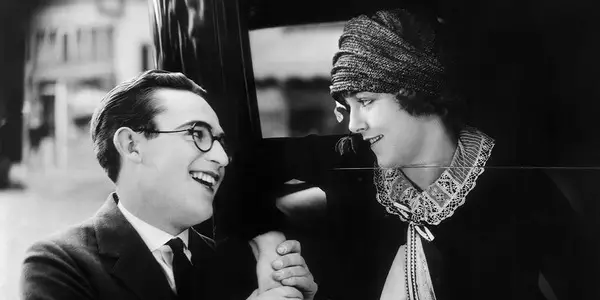
We’re treated to some scenes of Harold at work, dealing with customers and cutting fabric from bolts of cloth. There’s a particularly good bit with a woman arriving just as he’s closing up, wanting to inspect every single bolt of cloth but ultimately choosing the first option – a nightmare anyone who’s worked in service can instantly relate to. After his shift, he runs into an old friend from his hometown who’s now a beat cop in the city. They joke and shove each other around a bit, and when Bill shows up, Harold is eager to show him how he can do anything to a cop and get away with it. Seeing his friend over at the police box, he convinces Bill to push the office so he’ll fall over, as a way for Harold to show his perceived influence with the law. However, before they get into position, they don’t see a different officer (Noah Young) take his place. Naturally enraged at being toppled, the officer chases Bill, who quickly climbs the façade of a building to evade capture as the officer swears revenge. Meanwhile, Mildred joyously receives the lavalier. Thinking that Harold is doing so well, her mother encourages her not to wait any longer and join him in the city immediately. Naturally, she does, surprising him in the middle of his workday after a chaotic fabric sale that puts stories of modern Black Fridays to shame. He quickly puts on airs, assuming the role of a manager and bossing his coworkers around before being summoned by the actual manager to be reprimanded for not wearing a jacket on the sales floor. (“The idea of working in your shirt sleeves! Think of the shock to your customers – women of culture and refinement.”) The scene continues with multiple gags as Mildred believes he’s actually the general manager, abusing his “ability” to summon employees at will with the push of a button, and eventually, he gets her off to her hotel. Realizing she left her purse in the office, Harold reluctantly goes back and overhears the manager lamenting about the lack of success in their advertising. Remembering Bill’s ability to scale the building, he offers his idea for a thousand dollars, guaranteeing a crowd of hundreds, and shrewdly offers Bill $500 to do the stunt, to which he readily agrees.
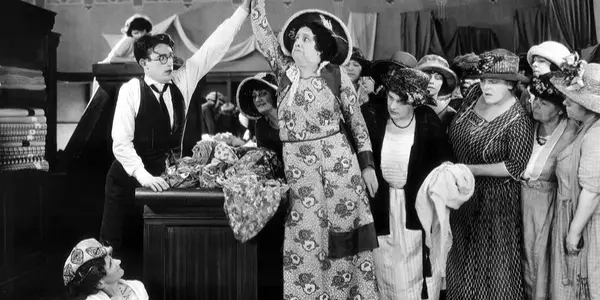
The next day, the officer learns about the “Mystery Man” who will be climbing the department store building that afternoon. Piecing together that it’s Bill, he posts up at the column where he’ll begin climbing in order to finally arrest him. Despite Harold’s best efforts, including a clever “Kick Me” gag, he can’t get the officer to leave his post for too long. Bill suggests that Harold climb to the second floor, where Bill will sneak up and trade places with him through the window. Harold very begrudgingly agrees and begins climbing, but as luck would have it Bill can’t shake the officer and continuously has Harold climb “just one more floor.” As he nears the top of the building, a mishap with the window leads to him clutching a clock hand for dear life in one of the most iconic shots of the silent film era. Eventually, he makes it to the roof ledge, but not without a final hangup as his ankle gets caught and he swings from a rope, but he manages to get up and kiss a waiting Mildred. They watch Bill lead the officer on a chase across rooftops and happily leave together.
A Fun, Fast-Paced Film
Seeing this film for the first time, it’s no wonder that it tied Lon Chaney’s The Hunchback of Notre Dame for the third-highest box office of the year. Not only is it a funny film that manages to have both great physical comedy and thrilling suspense, but it’s also quite well-made. Walter Lundin’s cinematography is impressive for 1923, from the framing of the opening gag to the trick photography that makes it appear as though Lloyd truly is hanging twelve stories above the street.
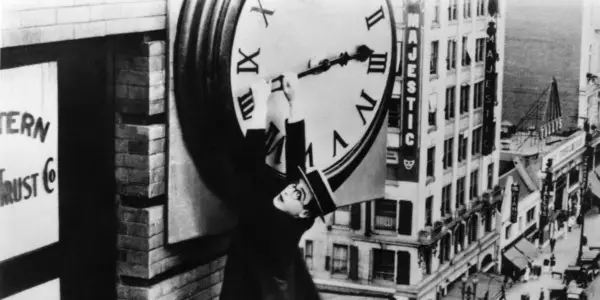
The cast is wonderful, which isn’t a surprise given that the leads are named after the actors that play them, and since Lloyd was inspired to create the film’s final sequence after seeing Bill actually climb as a steeplejack, I’m sure a lot of this was written with the actor’s strengths in mind. Though Lloyd did many of his own stunts, both Bill and stuntman Harvey Parry were used for the wide shots, though Parry’s involvement wasn’t revealed until after Lloyd’s death. Nonetheless, the entire sequence of climbing the building is just as thrilling and stress-inducing as any stunt Tom Cruise might pull today. Perhaps more so, depending on the extent of 1923 safety standards.
Conclusion:
As a lifelong fan of older and silent films, I always meant to get around to watching Lloyd’s work. I feel as though he isn’t discussed as often as Chaplin or Keaton, which is unfortunate. This film has also long been fascinating to me because of the famous homage to it in Back to the Future, with Christopher Lloyd taking the former Lloyd’s place on the clock, and I love seeing the origin of film references and homages. (Side note: There’s also a clock in that film’s opening sequence that replicates this film’s famous scene.) Though Safety Last! has never really been a deep cut or a cult classic by any means, it should get more love, and I would recommend this to anyone. Given that it’s a brisk 74 minutes, you could easily sneak it in between episodes of your current binge rewatch today, and I think you should.
Safety Last! is available to stream on Max, The Criterion Channel, Kanopy, Classix, Public Domain Movies, or YouTube, as well as available for rent or purchase on Apple TV and Prime Video.
https://www.youtube.com/watch?v=V-XZWZVVhvQ
Watch Safety Last!
Does content like this matter to you?
Become a Member and support film journalism. Unlock access to all of Film Inquiry`s great articles. Join a community of like-minded readers who are passionate about cinema - get access to our private members Network, give back to independent filmmakers, and more.
Jules Caldeira is an Associate Editor for Film Inquiry based in Sacramento, CA. He's a drummer, part-time screenwriter, and full-time Disney history nerd who can be found on social media when he remembers to post, and can be contacted at [email protected].





